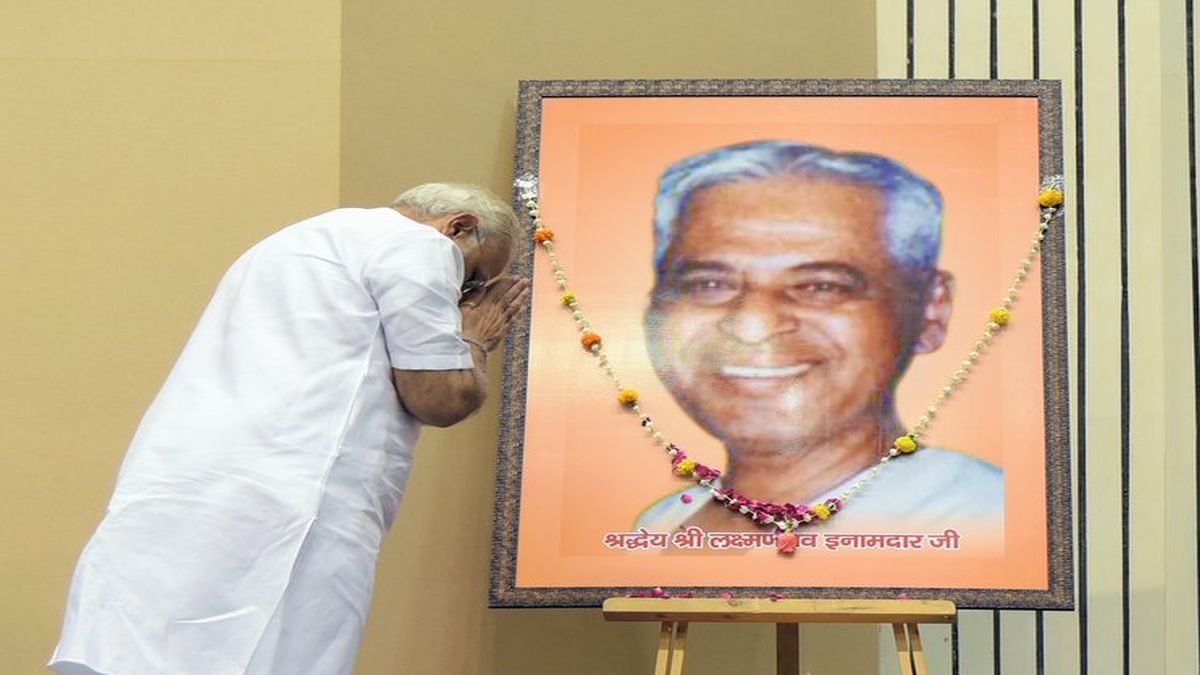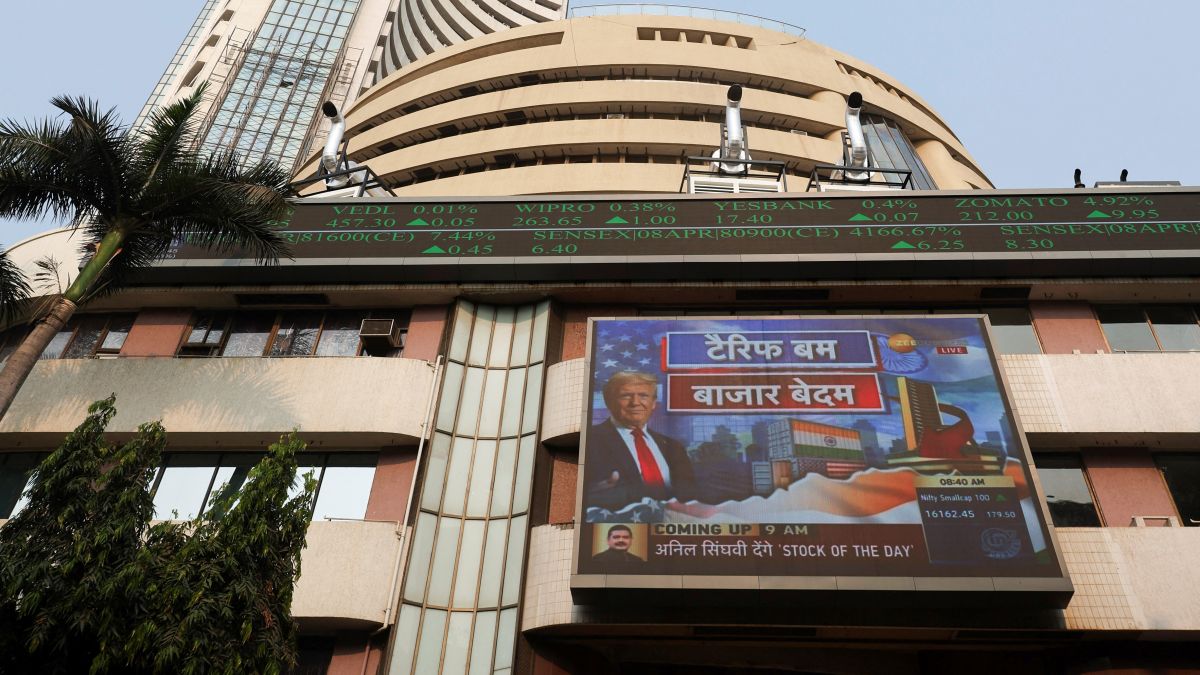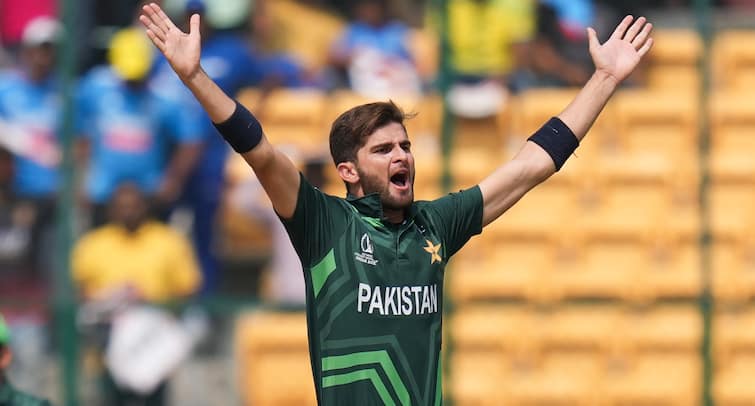A man’s ideals and life is shaped by many people — they could be parents, teachers, guides or even friends. It’s no different for Prime Minister Narendra Modi, the prime minister of India.
Among the many whom the prime minister considers as guiding lights of his life, is Rashtriya Swayamsevak Sangh’s (RSS) Laxmanrao Inamdar, who played a significant role not only in Modi’s personal life but also his political father-like figure.
As Prime Minister Modi turns 75 tomorrow (September 17), we take a closer look at who exactly was Inamdar and his everlasting impression on the Indian leader and his politics.
Who was Laxmanrao Inamdar?
Born on September 19, 1917, Inamdar was a founding member of the RSS in Gujarat. At the age of 25, a young Inamdar landed in Gujarat as a pracharak from Maharashtra — he was born in Khatav, a village 130 kilometres south of Pune. Since then, he made the western state his ‘karmabhoomi’, inspiring thousands of swayamsevaks across generations to work for the society and country.
The span of Inamdar’s influence is vast: it spans across generations — from Chimanbhai Shukla, to Arvindbhai Maniyar, Vasantrao Gagendragadkar, Keshubhai Patel and Narendra Modi.
Moreover, Inamdar inspired people to build institutions that would strengthen the nation. It is said that his contribution to the cooperative sector is unparalleled. In fact, when the cooperative movement was equated with corruption, nepotism and inefficiency, people inspired by him built exemplary cooperative organisations like Rajkot Sahakari Bank, Janata Sahakari Bank, Pune and many others.
Inamdar was diagnosed with cancer in the ’80s. He, however, served the RSS until his dying breath.
But, how did Inamdar influence Modi?
Inamdar, who was also known as Vakil Saheb within the RSS circles, came into Modi’s life when the latter was a child in Vadnagar, Mehsana district. At the time, Inamdar was reviving the RSS movement in Gujarat.
According to PM Modi himself, his first meeting with Inamdar came when the latter visited his village in the early 1960s. Recounting his meeting with Vakil Saheb, he told Nilanjan Mukhopadhyay, “I was very impressed by him, he touched a chord in my heart.”
And it is perhaps Modi’s focus on the RSS and his friendship with Inamdar that pushed him away from his own father. As Andy Marino, author of Narendra Modi: A Political Biography, wrote: “Inevitably fathers see their sons growing up, escaping their influence, and sometimes, a fierce love causes them to resent it. When it also happens that a replacement father figure is involved, especially one so locally glamorous as Vakil Saheb, the hurt can be significant and the paternal feelings of redundancy and emotional loss powerful.”
Editor’s Picks
Following Modi’s return to Gujarat, he re-established his contact with Inamdar, who was based at Hedgewar Bhavan, the RSS headquarters in Ahmedabad. “Inamdar re-entered Modi’s life when he was at a crossroads,” Mukhopadhyay has written on their relationship. “Modi left home to get away from his marriage in 1968. When he returned, he found his wife still waiting for him so he went away to Ahmedabad,” he said. Once Modi moved into Hedgewar Bhavan under his mentor’s wing, he never looked back.
In 1972, Inamdar officially inducted Modi into the RSS and even pushed him to pursue his further education in the country’s capital.
When Indira Gandhi imposed Emergency in 1975, the RSS was banned and critics of the then PM were being silenced by being imprisoned. It was then that Inamdar convinced Modi to distribute pamphlets in Delhi and pass messages between Hindu nationalists and opposition leaders.
Vakil Saheb also tasked Modi with escorting George Fernandes to safe houses — it was during this time that the now PM disguised himself as a turbaned Sikh man.
After Emergency was lifted, Inamdar promoted Modi to vibhag pracharak, in charge of Baroda district and, by 1979, a sambhag pracharak in charge of Nadiad, Dang and Panchmahal districts.
Modi’s interactions with Inamdar reduced as his career began to skyrocket, but he never missed a chance to spend time with his mentor.
What does Modi say about Inamdar?
Following Inamdar’s demise, Modi felt a deep void in his life, as he once told Marino. “Whenever I was facing any problem at that time, I used to talk to him,” he told the writer earlier. “Now, he adds, almost mechanically, ‘I have an autopilot in my thinking process’.”
PM Modi also wrote a book on Inamdar, which was titled Jyoti Punj, as a gesture of gratitude to his mentor. Modi expressed admiration for Inamdar’s work in the book, recalling how the latter worked relentlessly to fight court challenges on behalf of his peers following Mohandas Karamchand Gandhi’s killing.
Modi also wrote a poem for him, titled ‘The debt to the Rishi’.
In 2023, during the 100th episode of Mann ki Baat, PM Modi also made a mention of Inamdar, saying, “I had a mentor, Shri Laxman Rao Ji Inamdar. We used to call him Vakil Saheb. He would always say that we must worship the good qualities in other people. Whoever it might be, an associate or an opponent, we must always try to understand their good qualities and try to imbibe them within ourselves. His words have always inspired me. Mann ki Baat has become an important medium of learning from others.”
With inputs from agencies
End of Article

)
)
